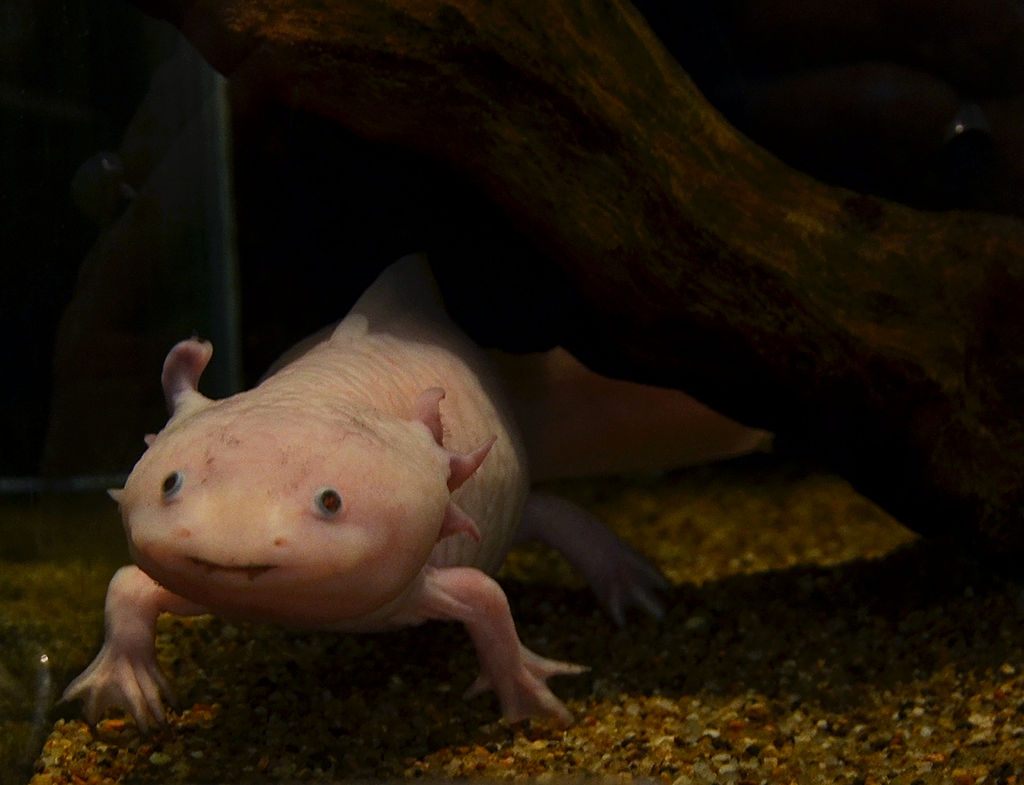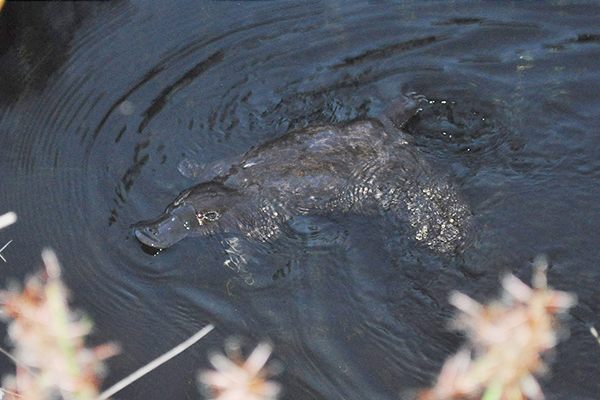Frogs From Beyond Extinction
 Variable harlequin frog, believed to be extinct in the 1990s, rediscovered in 2003 (photograph by Brian.gratwicke)
Variable harlequin frog, believed to be extinct in the 1990s, rediscovered in 2003 (photograph by Brian.gratwicke)
Amphibians — including frogs, toads, salamanders, newts, and caecilians — have survived five mass extinctions on earth, and have endured in their current form more than 200 million years. Many scientists believe that we are entering or are currently in the sixth mass extinction, and this time amphibians may not be so lucky. Today, between the devastating effects of a disease called chytrid fungus and the broad ramifications of climate change and habitat destruction, nearly one third of the world’s 7,000 species of amphibians are threatened or extinct.
 The rare axolotl salamander is on the verge of extinction (photograph by Vassil)
The rare axolotl salamander is on the verge of extinction (photograph by Vassil)
But in the early 2000s, a series of discoveries in Ecuador, Costa Rica, and Australia made it clear that some of those extinct species were in fact still out there. Robin Moore, Director of the Amphibian Program at Conservation International and founder of the Amphibian Survival Alliance, has dedicated his life to the study and conservation of frogs and salamanders, and needless to say he was quite heartened by these findings. So in 2010, he began a campaign to raise awareness as well as funds, with the goal of heading out into the wilds to see if other ”extinct” species were still around. He worked with experts around the world to compile the most likely candidates for “un-extinction,” ultimately putting together a “most wanted” list of the top 10 iconic lost species.
 Hula Painted Frog, rediscovered in Israel in 2011, after 55 years of “extinction” (photograph by Mickey Samuni-Blank)
Hula Painted Frog, rediscovered in Israel in 2011, after 55 years of “extinction” (photograph by Mickey Samuni-Blank)
That in turn grew into supporting 33 research teams of more than 120 scientists on journeys to 21 countries to look for Lazarus frogs. It became the largest coordinated global search for lost species. Moore himself went on expeditions in the uncharted territory of the Chocó jungle in Colombia and the cloud forests of southwest Haiti, as well as India, Israel, and Costa Rica. He chronicles these journeys, their disappointments, and their triumphs in his new book, In Search of Lost Frogs.
Although many of the frogs the researchers were seeking remain extinct, more than a dozen were found, including the Mozart’s Frog, the Ventriloqual Frog, and the Bornean Rainbow Toad, which hadn’t been seen in 87 years. What’s more, several new species were discovered — including a beaked toad now called the Monty Burns, after the villainous boss on The Simpsons, which was named Time magazine’s #1 new species of 2010.
 Cliff Chirping Frog, a relative of the newly un-extinct Mozart’s Frog (photograph by Dawson)
Cliff Chirping Frog, a relative of the newly un-extinct Mozart’s Frog (photograph by Dawson)
In addition to the thrill of being able to bring these amphibians back from extinction, studying them may lead scientists to find new ways to save others. If researchers can discover why these frogs were able to survive, they may be able to help other species replicate those methods. One such finding has been a bacteria discovered on the skin of some frogs that enables them to fight off the deadly chytrid fungus. If a way can be found to put that bacteria on the skin of other frogs, as Moore wrote on BBC Earth, “we may be able to give Lazarus frogs a second chance.”
Bonus: For a slideshow of Moore’s award-winning amphibian photography, go here.















Follow us on Twitter to get the latest on the world's hidden wonders.
Like us on Facebook to get the latest on the world's hidden wonders.
Follow us on Twitter Like us on Facebook